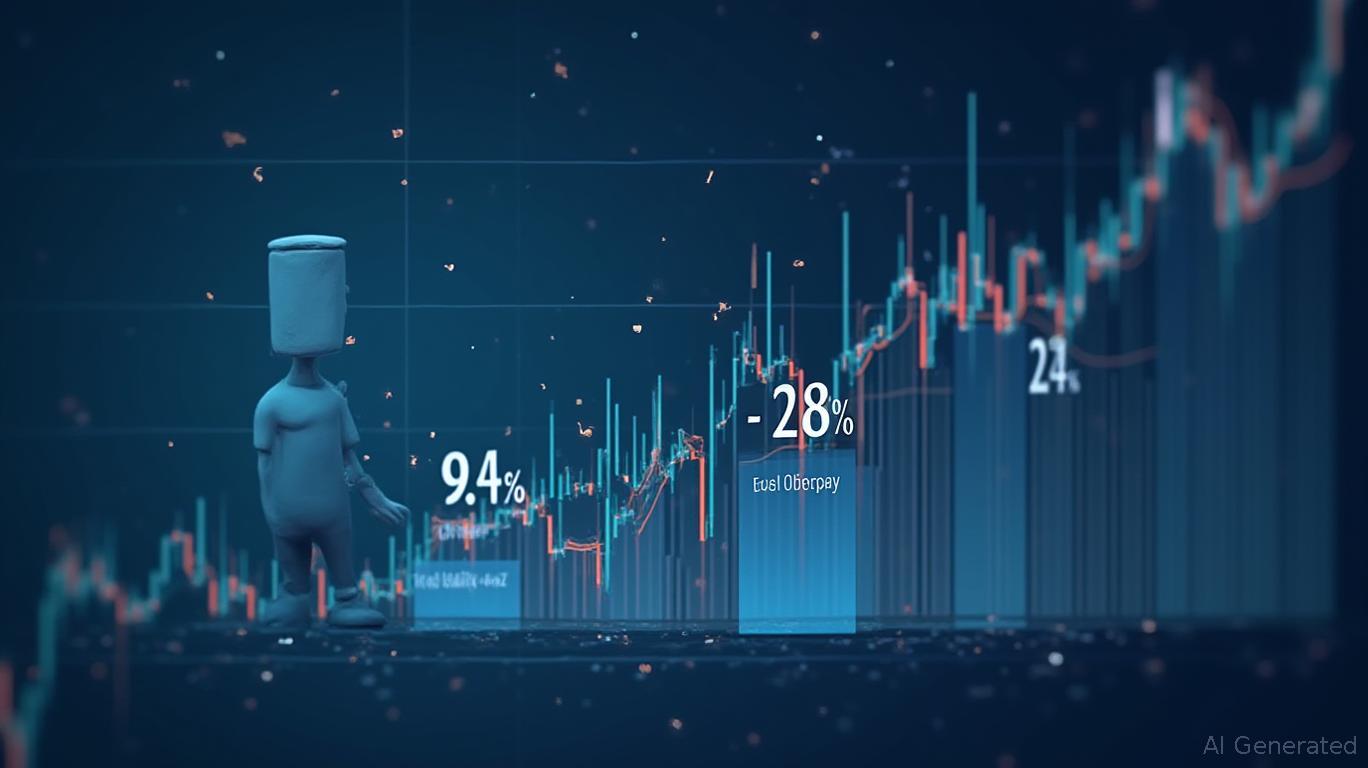The S&P 500's Record High: A Rate-Driven Rotation to Vulnerable Sectors?
On June 19, 2025, the S&P 500 inched closer to its all-time high, closing at 6,141.02, buoyed by Federal Reserve signals of imminent rate cuts and a temporary truce in U.S.-China trade tensions. Yet beneath this headline, a quieter but significant shift is underway: investors are rotating into rate-sensitive sectors like utilities, real estate, and consumer discretionary stocks in anticipation of a Fed pivot. The question is whether this rotation will sustain the market's ascent or falter under lingering risks like inflation, trade wars, and economic uncertainty.

The Fed's Role in the Rotation
The Federal Reserve's pivot from tightening to easing is the linchpin of this equity rotation. With two rate cuts expected this year—potentially starting as early as July—the market is pricing in a return to accommodative monetary policy. Lower rates reduce the cost of borrowing and elevate equity valuations, particularly for sectors sensitive to interest rates. Utilities and real estate, for instance, thrive in low-rate environments because their high dividend yields become more attractive compared to bonds. Consumer discretionary stocks, too, benefit as lower rates spur consumer spending.
Sector Dynamics: A Mixed Picture
While the S&P 500's near-record high reflects optimism, the performance of rate-sensitive sectors reveals underlying fragility:
Utilities (0.4% 6-month return):
Utilities have held up better than the broader market, gaining 0.4% over six months, compared to the S&P's -1.3%. This resilience stems from their defensive nature—essential services like power and water are less exposed to economic slowdowns. Additionally, AI-driven data centers, which require massive energy consumption, have created a new demand driver. However, utilities are vulnerable to rising rates: if the Fed delays cuts or inflation surprises higher, their high debt levels and rate sensitivity could reverse their gains.Real Estate (-5.5% 6-month return):
Real estate stocks have lagged, falling 5.5% over six months. While lower rates should support mortgage-backed demand and commercial property valuations, the sector faces headwinds from over-leverage and the uncertain post-pandemic office demand. The sector's 12-month performance of 15.9% suggests it's not entirely out of favor, but its short-term struggles highlight the tension between rate expectations and real-world risks like office vacancy rates.Consumer Discretionary (-3.7% 6-month return):
Despite a strong 21.7% return over 12 months, consumer discretionary stocks have stumbled in recent months. Tariff-related headwinds, particularly in tech and automotive, and a slowdown in housing activity have dented confidence. Yet the sector remains a bellwether for consumer health: if rate cuts revive spending on travel, entertainment, or big-ticket items, it could rebound sharply.
Risks to the Rotation
The Fed's pivot is far from guaranteed. Key risks loom:
- Trade tensions: The U.S.-China tariff truce expires July 9, risking renewed escalation. Canada's lumber tariffs and semiconductor disputes could also reignite volatility.
- Inflation persistence: Core inflation remains above the Fed's 2% target, leaving room for skepticism about whether cuts will materialize as expected.
- Economic slowdown: Even if the Fed cuts rates, a recession could depress earnings in rate-sensitive sectors more than lower rates might help.
Investment Implications
Investors face a balancing act. Rate-sensitive sectors offer a hedge against the Fed's pivot but are exposed to the very risks that could derail it. Here's how to navigate this landscape:
- Utilities: Consider selective exposure to companies with strong balance sheets and ties to AI infrastructure, like NextEra Energy or . Avoid those heavily reliant on volatile rate environments.
- Real Estate: Focus on industrial and logistics REITs (e.g., Prologis) benefiting from e-commerce growth, rather than office REITs.
- Consumer Discretionary: Look for firms insulated from tariffs, such as (which benefits from AI-driven services) or companies with pricing power like .
Conclusion
The S&P 500's record high is a testament to investors' faith in the Fed's ability to cushion the economy. Yet the equity rotation into rate-sensitive sectors is still fragile, hinging on a precise calculus of Fed action, trade developments, and inflation. For now, the market's optimism is justified—but investors should treat this rotation as a tactical opportunity, not a permanent bet. The path to sustained gains will require more than just rate cuts; it will demand clarity on trade, stability in inflation, and proof that the economy isn't slowing beyond the Fed's control.
In this environment, a diversified portfolio tilted toward rate-sensitive sectors but hedged against macro risks offers the best chance to navigate the S&P 500's next chapter.

Comments
No comments yet